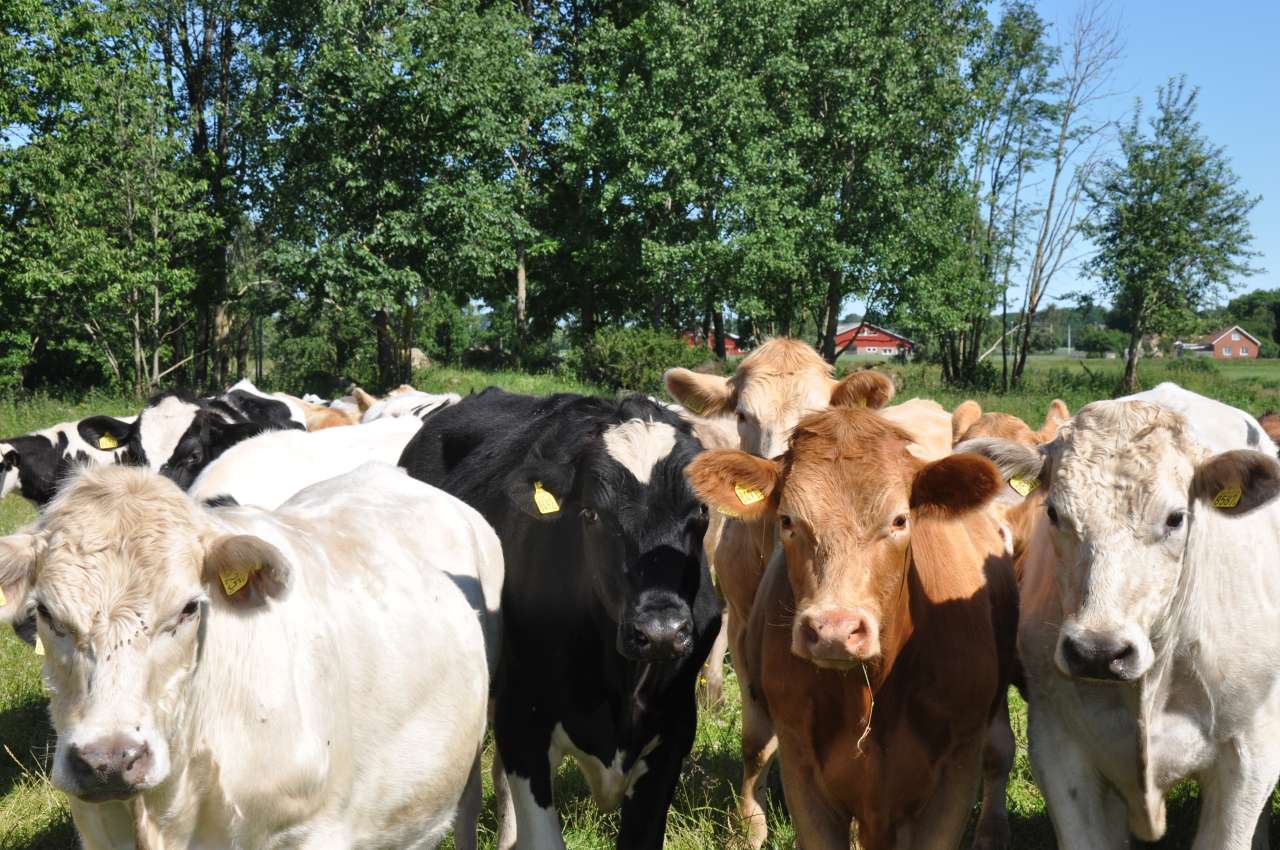WP2 Beef production

Forage and pasture based beef production
Measures to reduce the environmental impact of beef often intensify production aiming for faster growth rates, facilitated by more concentrate feeds (often cereal based) and less forage. However, there is scope to reduce reliance on human edible food and imported feed, by making greater use of forages and by-product feeds, which can also reduce costs, improve animal health and welfare, meat quality and acceptability by consumers. Sex-sorted semen offers the opportunity of climate-friendly intensification of beef production, possibly also contributing to ecosystem services if combined with grazing biodiverse, semi-natural pastures or other forage feeding. Rearing cross-bred cattle from dairy herds effectively reduces overhead global warming potential as it is allocated to both beef and milk production, and also offers greater biological efficiency than pure dairy beef. The objectives of WP2 are to evaluate:
- alternative beef systems to reduce the environmental impact and improve profitability
- sucessful rearing of dairy born bulls instead of controversial destruction at birth
- performance of cattle fed by by-products
- performance of cattle om pasture-only systmes
- beef quality
- animal health and welfare by providing diets more suited to rumen health
Task 2.1 Cross- and purebred steers on pasture (SLU)
Responsible: Anna Hessle
In this task, we will compare performance of dairy x beef (Holstein or Swedish Red x Charolais) crossbred steers with pure-bred dairy (Holstein and Swedish Red) steers. Steers will graze semi-natural pastures during one or two summers, indoor forage fed in intervening winter and slaughtered at 21 and 28 months of age. Profitability of the four systems will be calculated and life cycle assessment (LCA) will be performed to evaluate their environmental impact (WP 4). Genotyping, for tenderness, in meat will be performed by IGAB to be linked with meat quality parameters. Results from this task will stimulate the use of beef production systems that combine environmental advantages from dairy systems, which produce beef crosses with improved performance. In the task farmer, advisor and butcher associations will be involved in a participatory approach (e.g. Agroväst and Swedish Meat Enterprise), to discuss and evaluate alternative systems of beef production.
Task 2.2 Intensively fed cross- & purebred bulls (SLU)
Task 2.3 Forage and by-products fattening cattle (UP)
Responsible: Flaviana Gottardo
Maize silage and imported soy are the main feeds for finishing beef cattle in the Po Valley. The aim of the task is to improve the sustainability of beef farms by developing alternative feeding systems, both for pure breeds and local crosses, using high-quality forages and by-products. The study includes two steps:
- Alternative to conventional diets will be compared in a participatory approach on commercial farms, rearing both crossbreeds and pure breeds
- Economical and environmental sustainability will be assessed on a sample of farms that volunteer to use alternative diets of grass and lucerne hay and food by-products feed
Data from the systems’ comparison investigated in Italy will be submitted to WP4 for economic analysis and environmental assessment, considering different rearing systems adopted across the European countries.
Task 2.4 Pasture based beef production (UNEW)
In UK the Pasture Fed Livestock Association (PLFA) strives to produce milk and meat from cattle and sheep solely from pasture based systems. We will work with this producers’ association to monitor a range of commercial farms with different breeds of (mostly) UK native cattle using a range of pasture systems, from short-term leys in arable rotations to upland, semi-natural swards. With the exception of additional assessment of pasture growth and quality and meat fatty acid profiles, records collected will be common with other tasks in this WP facilitating a comparison of physical, financial and environmental performance and meat quality.

Leader:
Participants:

